Wales - Scotland - England
20 June - 17 July 2008
20 June - 17 July 2008
photos by G.P. Jones using Nikon Coolpix 4300 digital
camera, except where noted
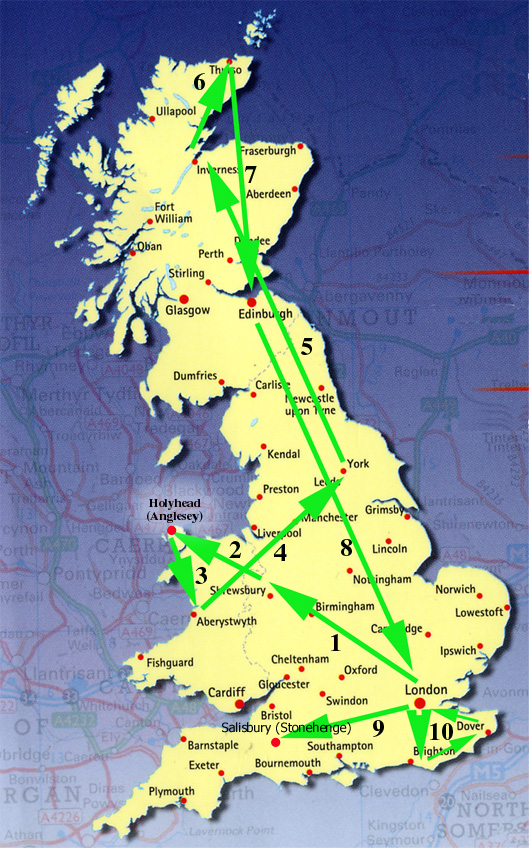
This trip began and ended in London. The numbers on the map represent
"legs" of the trip, not days. (I spent about 17 days in Wales, near Shrewsbury, at the end of the leg marked "1"). The legs marked "9" and "10" were day-trips from London.
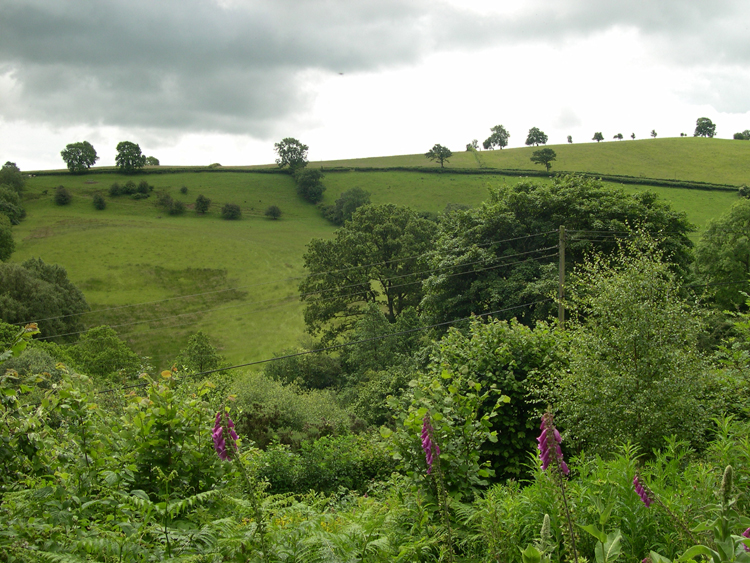
Tanat River Valley, my "home" in Wales for two weeks plus.
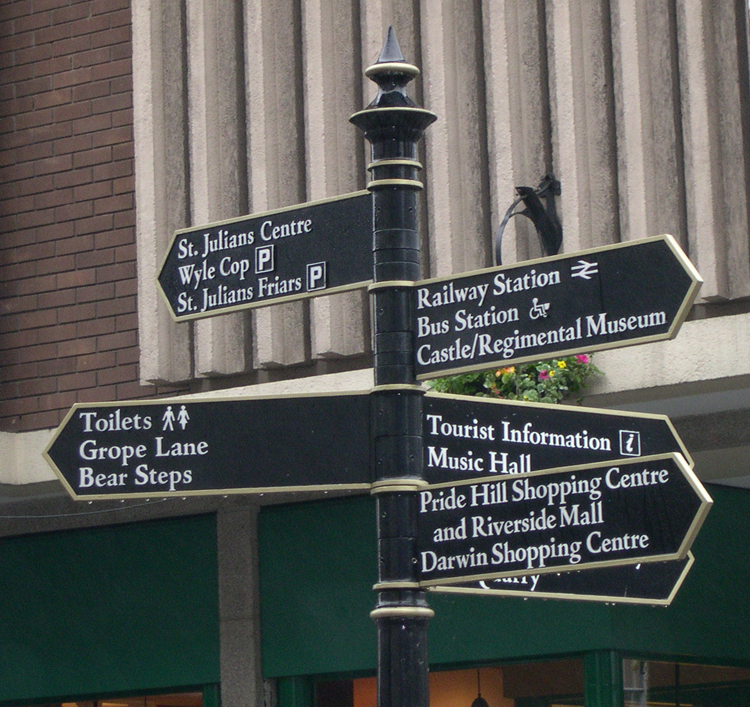
Signs in Shrewsbury (county Shropshire, on the Welsh border), pointing to,
among other things, Grope Lane.

Grope Lane. I wonder . . . (I didn't try it.)
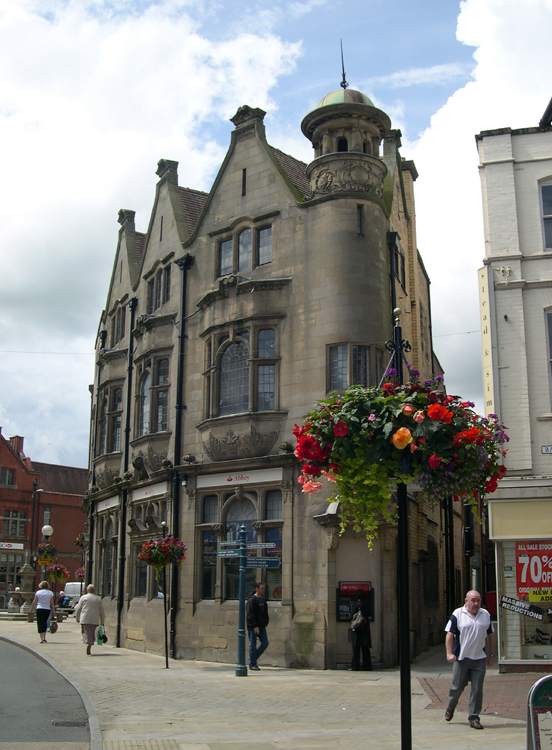
Edwardian (?) building in Oswestry, Shropshire
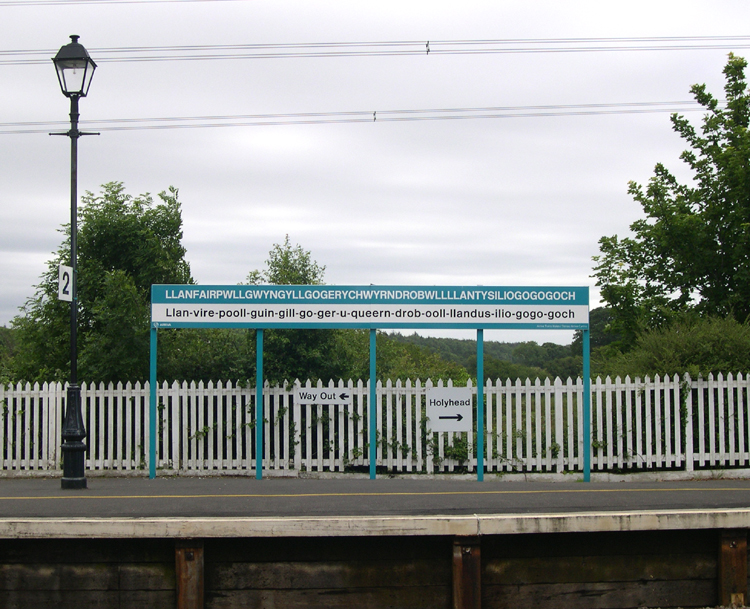
My first venture on this trip outside of the Tanat River Valley was to go
to the end of the East-West railway line to the town of Holyhead on the isle
of Anglesey. Also on Anglesey is this little tourist trap, famous for the
longest place-name in Wales (perhaps in the world), and well-known for
nothing else!

On the railway, they refer to this town as "Llanfair P.G."
You may need to scroll to the right to see the whole name!
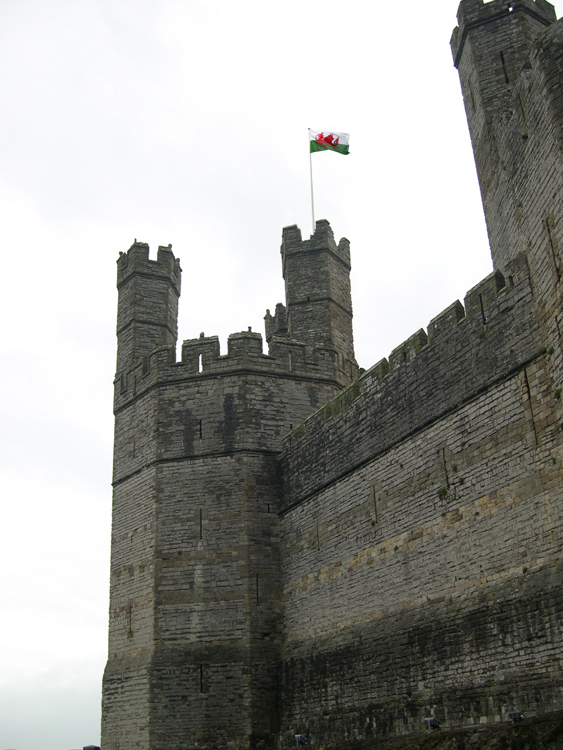
Near Anglesey, south of Bangor, is the medieval fortress called Caernarfon
(Carnarvon) Castle. In 1969 it was the site of the Investiture of Prince
Charles as Prince of Wales. It was used for this ceremony in part because
it was also the site where Edward I declared his infant son (also called
Edward), who had been born at Caernarfon Castle, as the first English Prince
of Wales. This satisfied the Welsh, who had demanded that any Prince of
Wales 1) must be Welsh-born and 2) must not speak English!
(Edward I was obviously quite clever!)
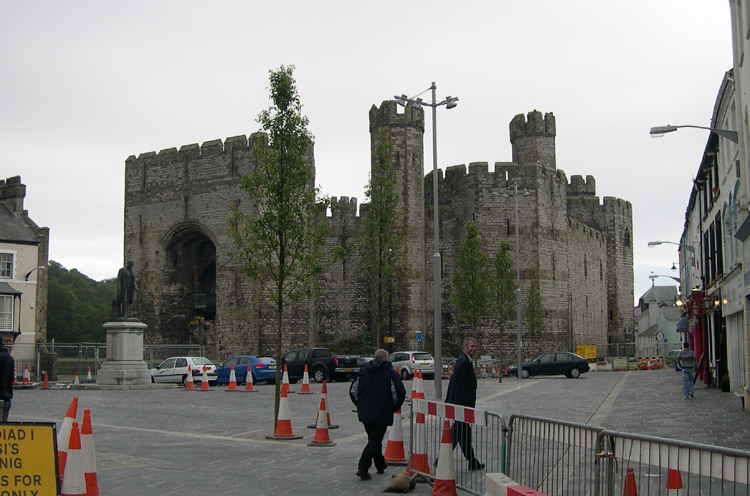
Typical, but always interesting to me, the village of Caernarfon, relatively
modern in many respects, is built around the medieval structure, seeming to
regard it as just another "house" in the town.
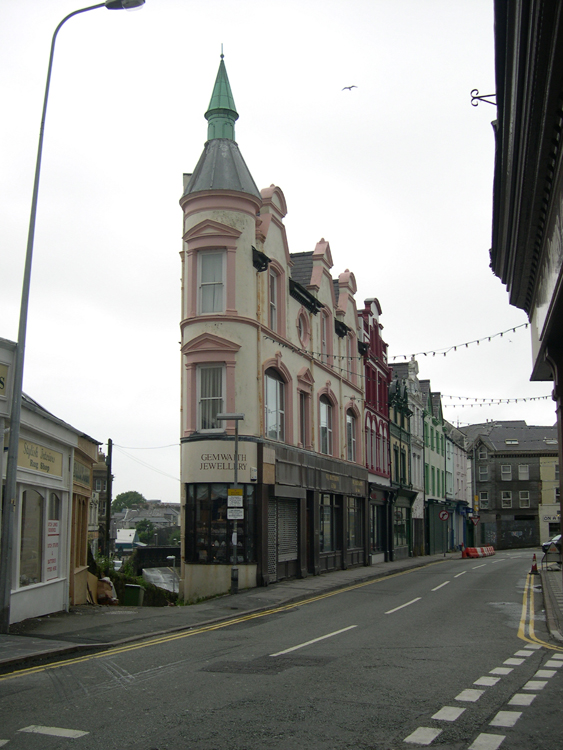
The famous Flatiron Building at 23rd and Fifth Avenue in New York has its
imitators (and perhaps predecessors!) all over the world. These are buildings
that are, to say the least, built to fit the space available!
This building can be found in Bridge Street, Caernarfon.
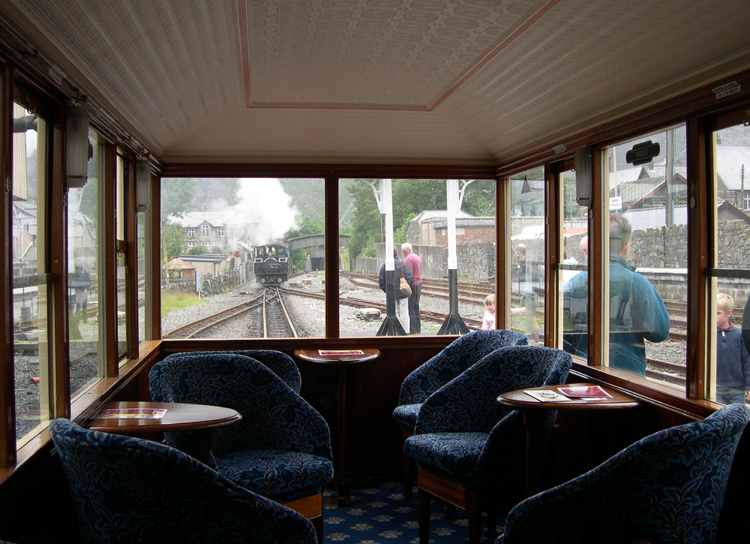
Traveling South from Bangor and Caernarfon on the railway you'll see scenery
that rivals any countryside in the world, in my opinion. Once you get to
the town of Blaenau-Ffestiniog, however, the mainline railway ends. If you want to
continue South, you take the independent Ffestiniog Railway to Porthmadog
(I'm not making up these names, you know!), where you can join another
mainline railway for other destinations. This is the view inside the
front car of the Ffestiniog Railway as the steam engine is being
maneuvered into place.
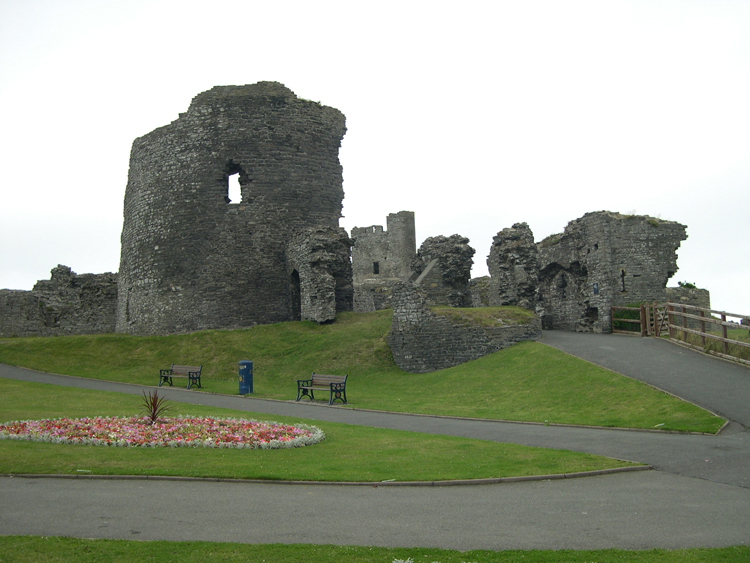
There are many medieval castles in Wales, not all in as good condition as
Caernarfon. This is (what's left of) the castle at Aberystwyth, on the West Coast.
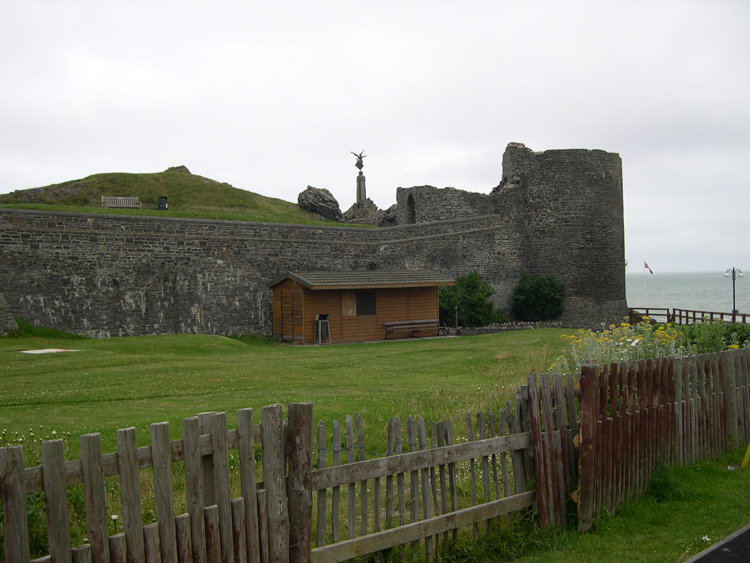
The angel on the pedestal near the center of this picture of Aberystwyth Castle
is on a modern monument at the beach, some distance behind the Castle.
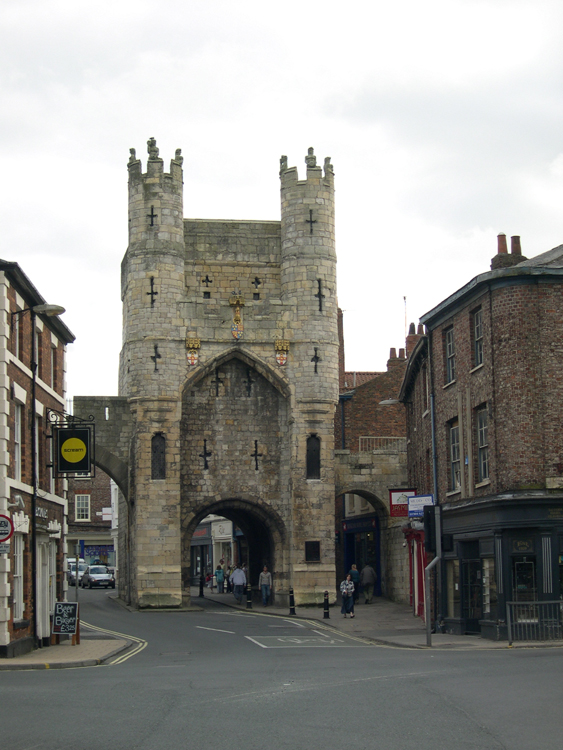
The next city I visited, perhaps the most surprising and exciting of the whole
trip, was York. First a Roman garrison, then a medieval town, now a modern
city, with evidence of all three stages still very much a part of life.
This is the medieval Monkgate, one of several entrances to the walled city.
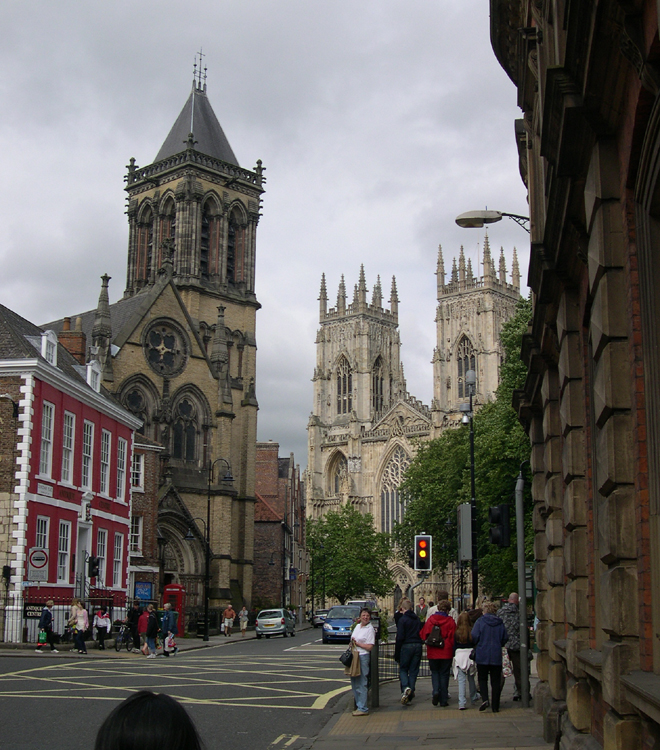
York Minster is a massive church which even today dominates the city and
countryside. One can only imagine how it towered over the landscape when
built in the 14th Century C.E. Here it's seen from the direction of the railway
station which lies to the South-West of the Minster.
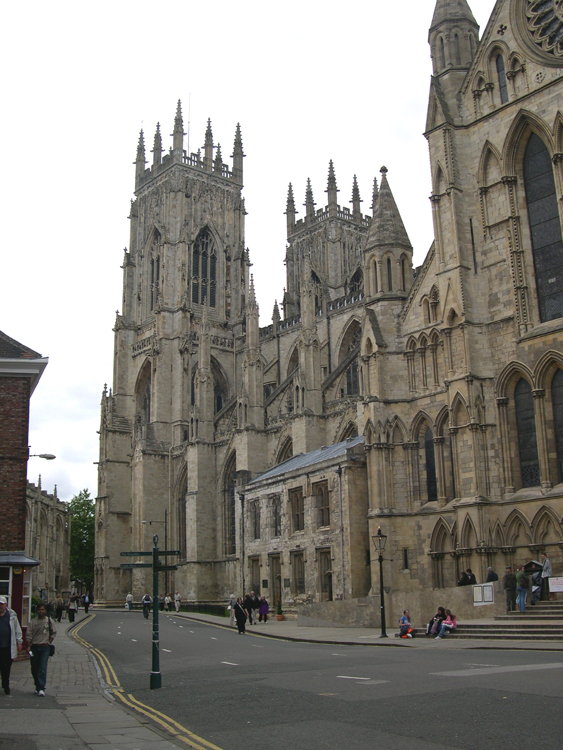
York Minster, looking toward the West
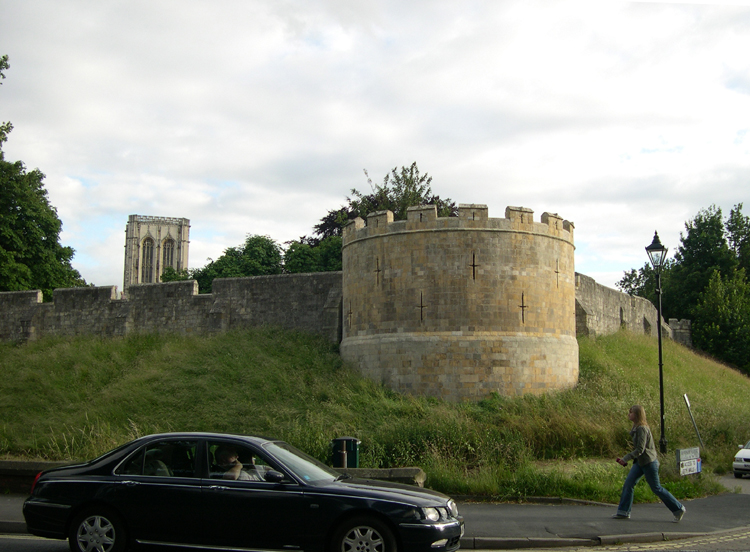
This medieval wall, once completely enclosing York, is built on the mounds
left by the original Roman wall, circa 3rd Century C.E. At the left, quite
a distance behind the wall, is the top of York Minster's main tower.
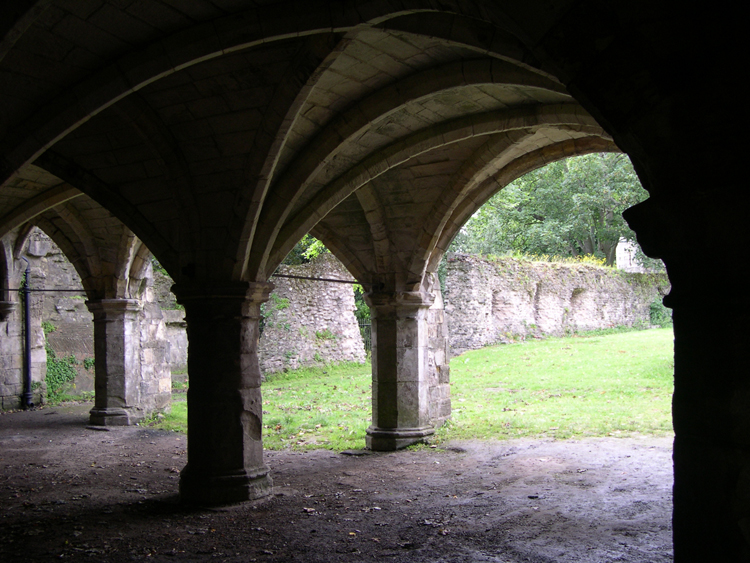
Yorkers (Yorkites?) have left ruins of important buildings in the city as
links to the past. This is (or was) St Leonard's Hospital. See the plaque
shown below for details.
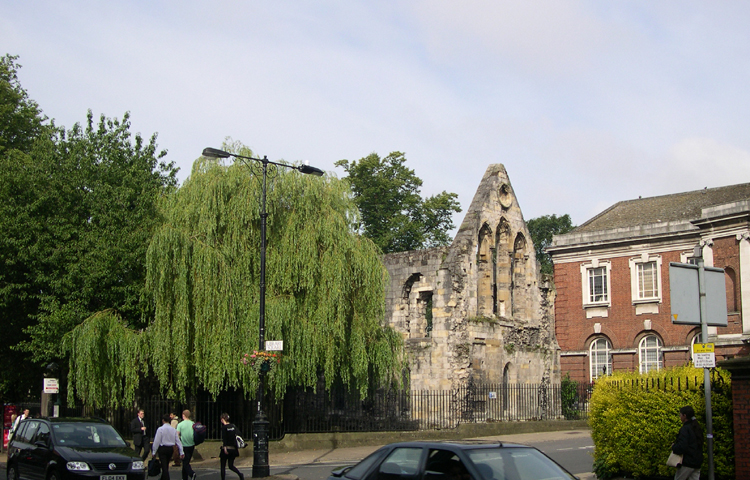
The exterior of St Leonard's Hospital, at the entrance to the Yorkshire
Museum grounds.

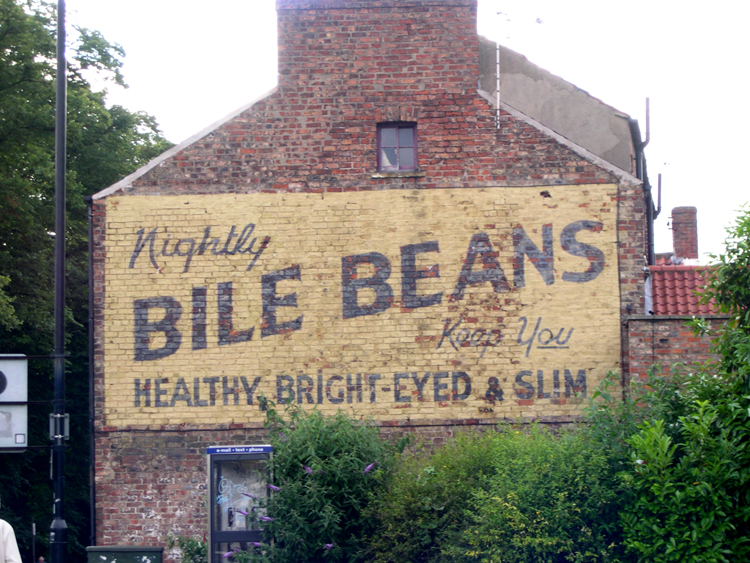
Maybe this is why York's people are so friendly. (And they are!)

From York, I went North to Scotland, expecting radically different scenery.
The scenery was stunning, but not really different from elsewhere in Britain.
Since I didn't take any pictures specifically of scenes in Scotland, I thought
I'd put the crop sculpture pictures here. Virtually every field in Britain
is partially plowed early on, with patterns like what you see here. It's not
clear whether this is some kind of superstition or something functional that
helps the crops, but it is everywhere.
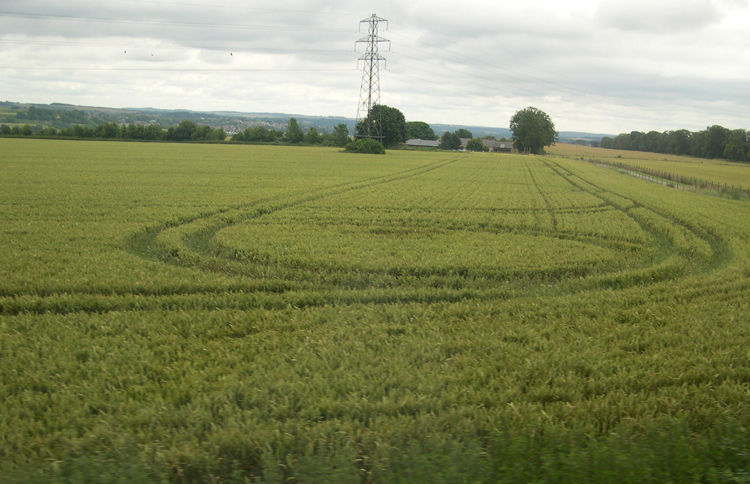
Many of these patterns can be seen from the air, and usually circle around
the edges of the fields.
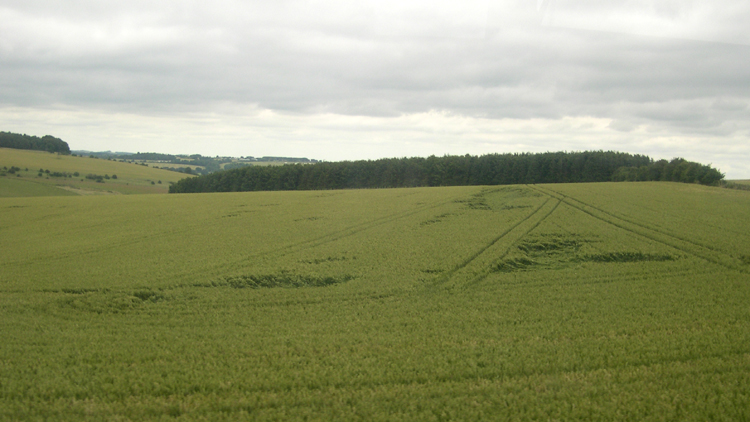
One guy told me that, sometimes, they think the people who do the crop sculpting
add little touches of their own -- like the "dents" seen in this picture,
then tell the owners they don't know how they happened -- must have been
aliens! Just good British fun? You be the judge.

After visiting the very top of mainland Scotland, namely Thurso and Wick,
I stayed in Edinburgh on the return trip. This collection of buildings is
seen as you enter the railway station. To me, it looks like those futuristic
images seen in early-20th Century silent films and elsewhere of what a "modern"
city would look like -- only dirtier.
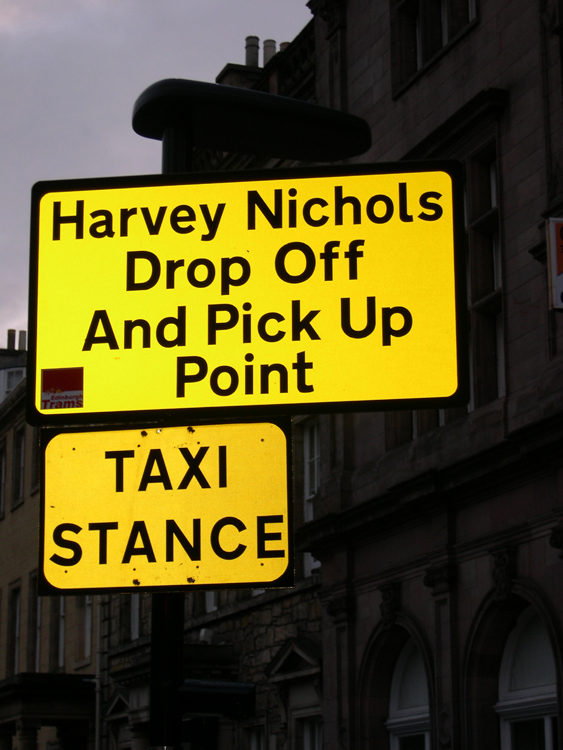
Lucky Harvey Nichols. Too bad all the citizens of Edinburgh can't have their
own transportation points like this.
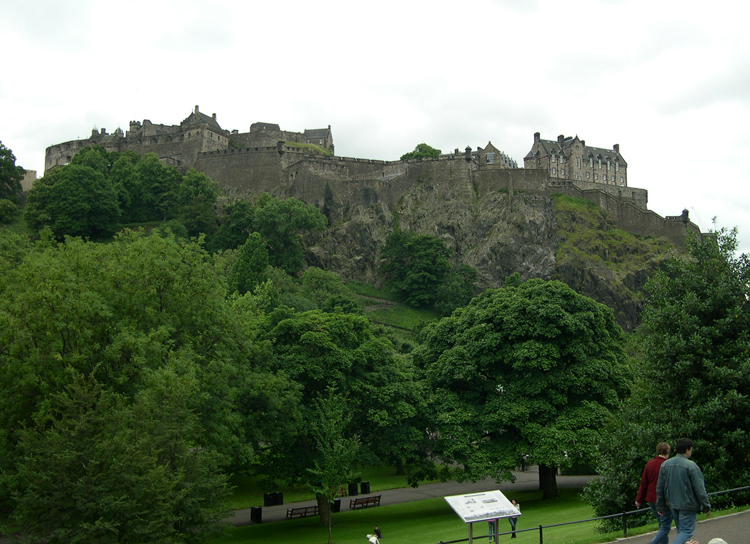
Edinburgh Castle sits on this cliff, just above the main city park and one
of its main thoroughfares, Princes Street, which is where I stood to take
this picture.
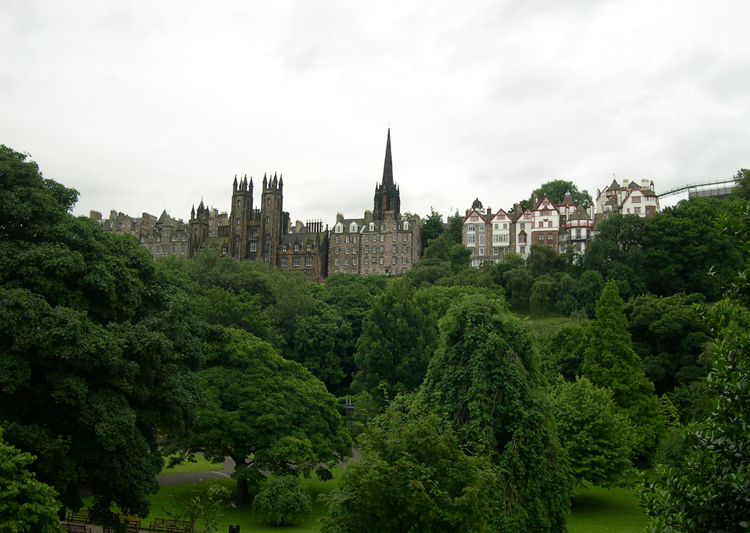
Look to the left of the Castle, and these somewhat more recent buildings are
on the cliffs.
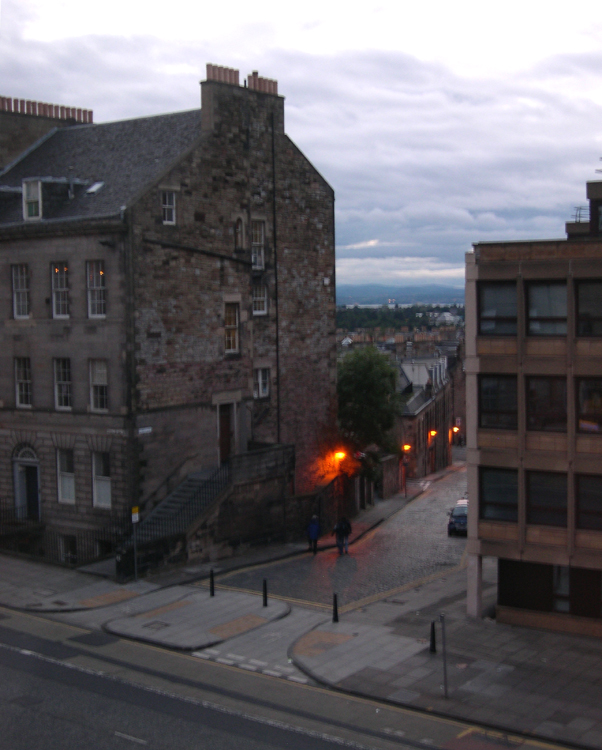
"The View from the Hotel Window" is becoming a theme of my vacation picture
pages. This is the view from my hotel room in Edinburgh. It looks vaguely
Dickensian to me, but then so does much of Edinburgh, for good reason.
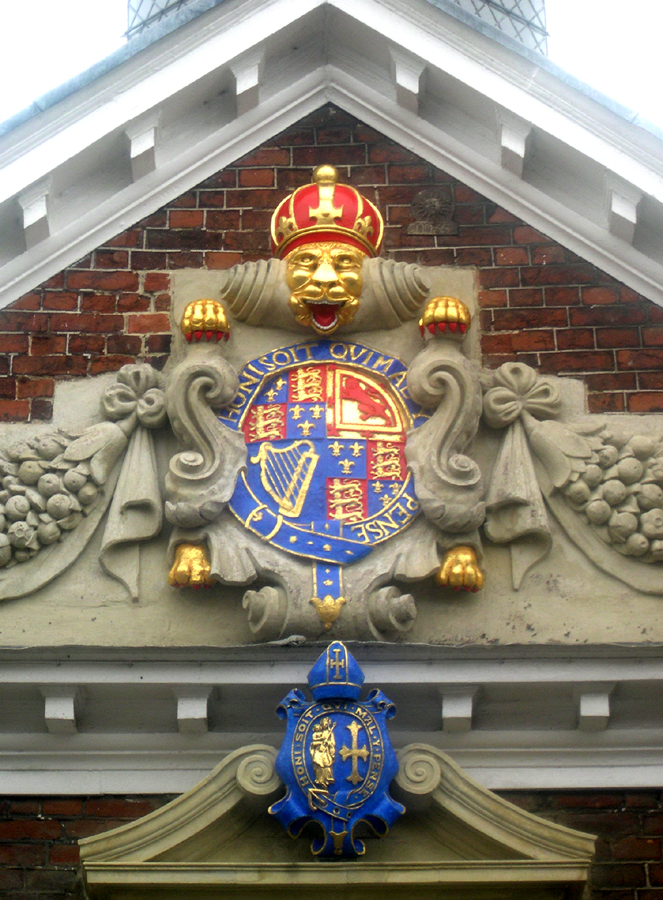
This British Coat of Arms is in the Cathedral Close (i.e., the neighborhood
around the Cathedral) in Salisbury. The famous motto means, "Evil be to Him
Who Thinks Evil ".
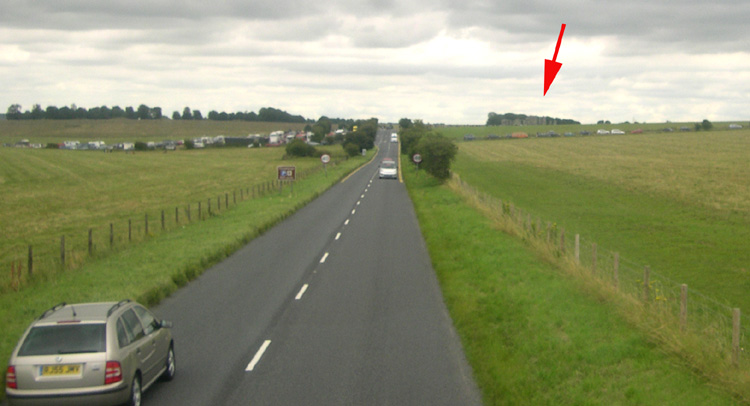
I made the trip to Salisbury mostly because I wanted to see Stonehenge. This
is a wide view of the Stonehenge location (arrow shows the site of the monument).
The region is known as the Salisbury Plain.
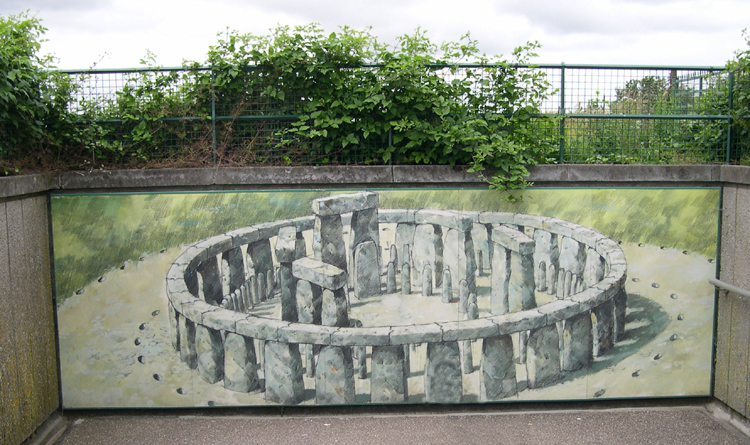
The original structure of Stonehenge is said to have looked like this.
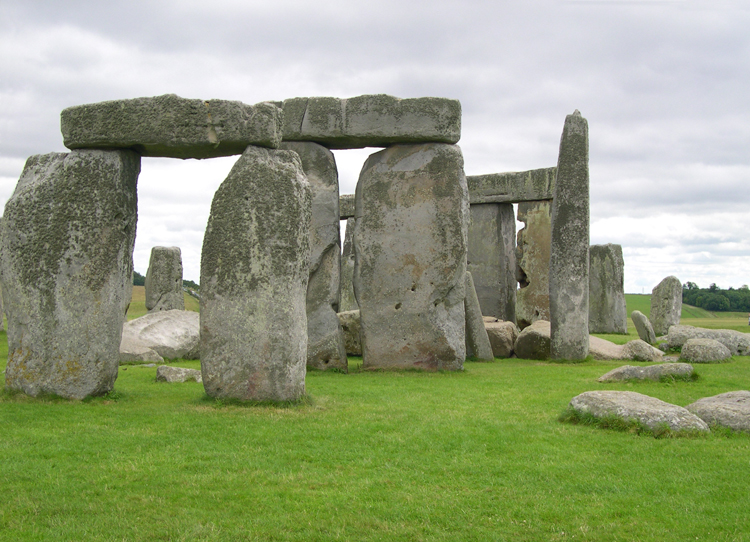
This is what it looks like today.

Rather, this is what it looks like today -- surrounded with tourists.
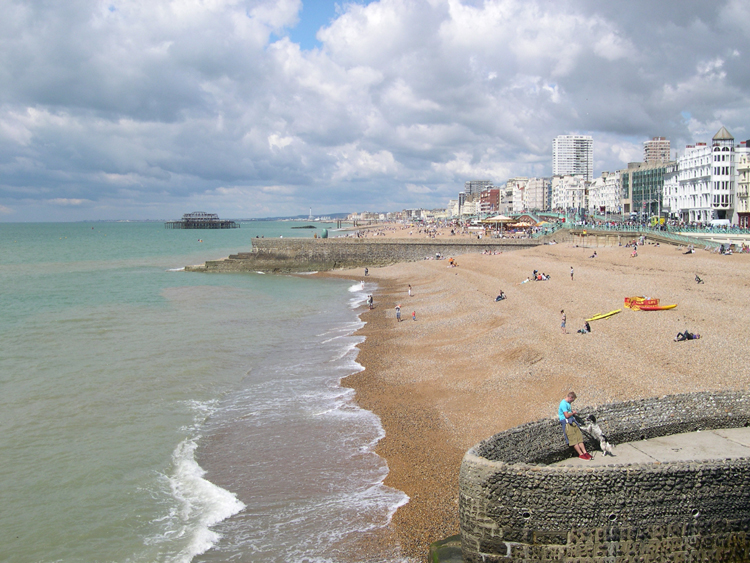
Years ago, I took the train to Brighton, and arrived at sundown! Not an ideal
arrival time for a beach resort. This time I was able to see a lot more!

Now, for some scenes in London. For centuries, England has been criss-crossed
with canals, one of the keys to its prosperity. Many of these canals still exist
and so do the locks that allow boats to move between the waterways at higher
elevations and those closer to the Thames. This is the set of locks at Camden Town,
which for a hundred years or more has been a part of Metropolitan London.
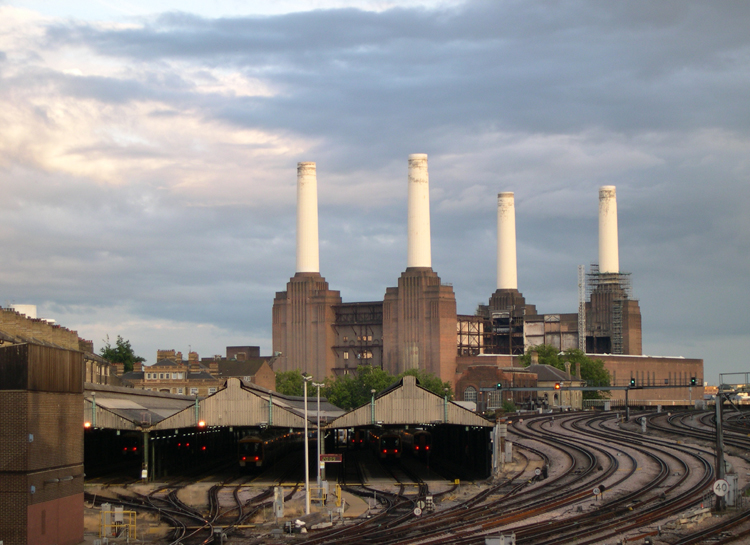
London's railways are its blood. This yard is near Victoria Station.
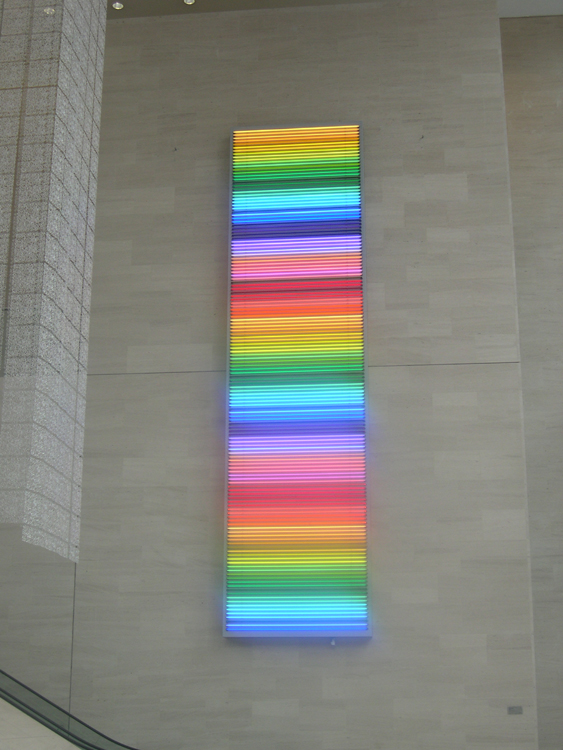
Try this: walk into a large building in London and start taking pictures
of things like this neon sculpture, which is in Victoria Street near Westminster
Abbey. Security guards will go nuts! I had to get permission from what they call
the "landlords" to take this picture, and then I had to promise only
to photograph "the lights", and nothing else.
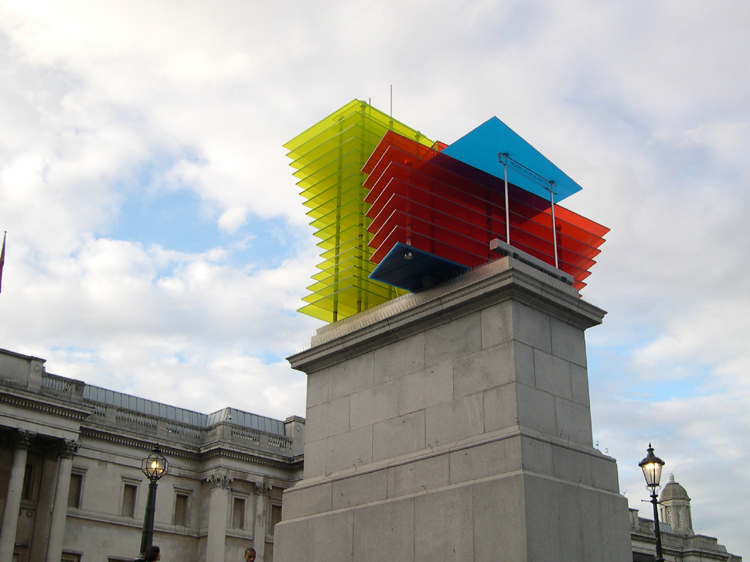
It was a lot easier to photograph this sculpture, which is a new addition
to Trafalgar Square. To me, it seems like the cousin of the sculpture in
the previous picture.
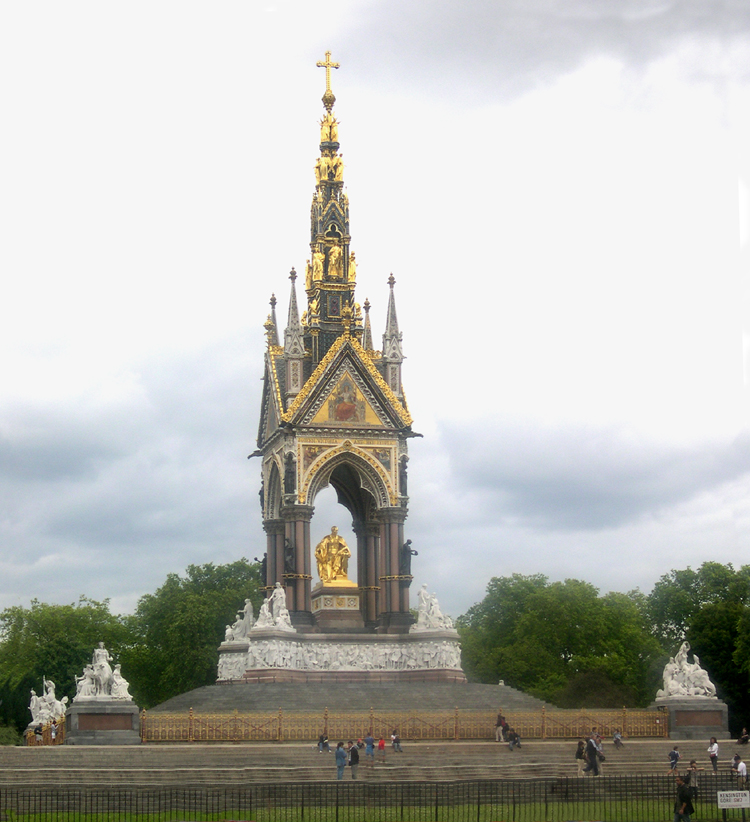
Everyone knows Queen Victoria, who reigned from 1837 to 1901, lost her husband
Prince Albert relatively early, in 1861. She mourned his loss for the rest of
her life, and countless memorials to his memory were constructed, many likely
financed, or at least encouraged, by Victoria herself. This one in my opinion
is simply over the top. It's located on the edge of Kensington Gardens across
from the Royal Albert Hall, a concert hall also named in Albert's honor.
All I can say -- and this may not be exactly politically correct -- is that
he must have been great in bed (while he was alive)!
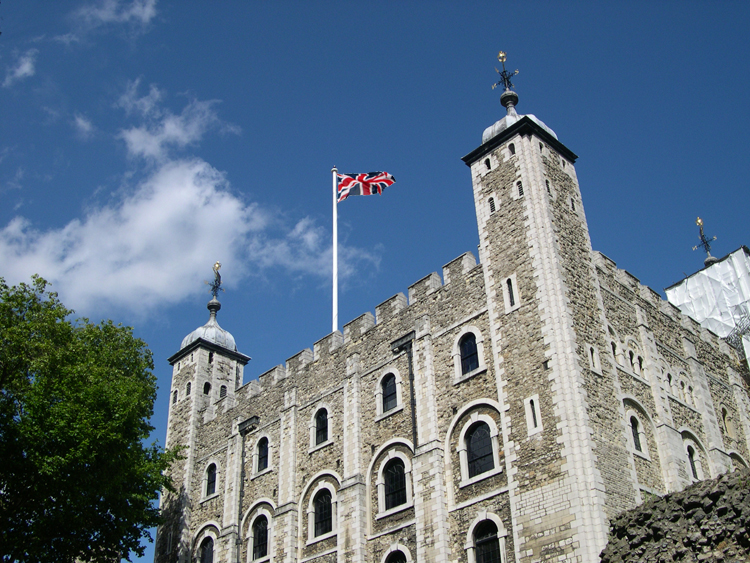
The Tower of London -- The White Tower. This building was begun on orders
of William the Conqueror in 1080. Unfortunately, it has been extensively
renovated and "prettified", making it primarily just another tourist attraction.

One notable exception to the plastic renovation of the Tower of London is the
Chapel of St John the Evangelist, on the second floor of the White Tower,
It is considered one of the finest extant examples of Norman church
architecture, and has remained virtually unchanged since the 11th Century.
The Wikipedia entry says it has "groin-vaulted aisles". I mean, what more
can you ask of a church?